Local naturalist, Chris Wren, uncovers the diversity of bees that can be found visiting Viper’s Bugloss.
If I were to choose one plant to attract bumblebees into the garden it would be Viper’s Bugloss (Echium vulgare). It is a native wildflower in the borage family and grows happily in gardens. It is biennial and seeds itself around in the right conditions – in my garden, the flower spikes are over 1m tall. Unlike many flowers, Viper’s Bugloss produces nectar throughout the day and the nectar is protected in hot or rainy weather, producing a very reliable nectar source over many weeks. In the past few weeks, I have seen 12 species of bee on the viper’s bugloss, including all seven common bumblebee species. One of my favourites and the easiest to recognise is the Red-tailed Bumblebee (Bombus lapidarius).
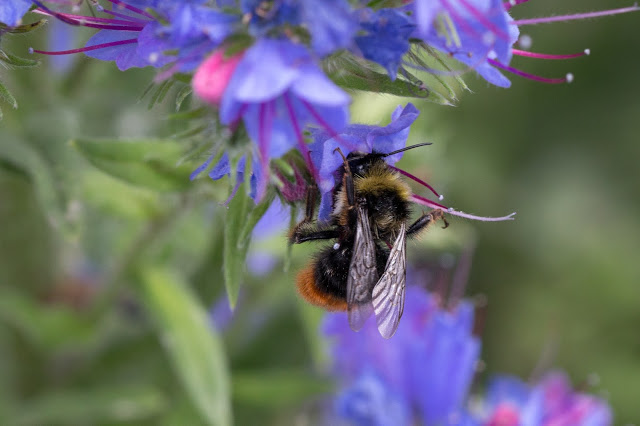
This is another easily-identified bee, a Common Carder Bee (Bombus pascuorum).
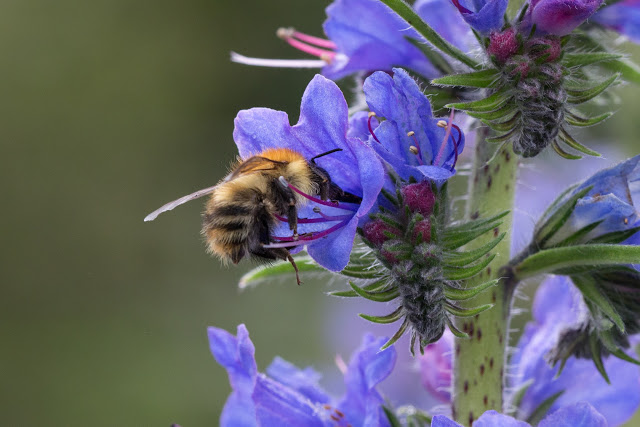
Nearly all the bumblebees I saw were only interested in nectar but several Early Bumblebees (Bombus pratorum) were collecting pollen, as you can see from the blue pollen in the pollen basket on this bee’s hind leg. Although she did take a few sips of nectar as well.
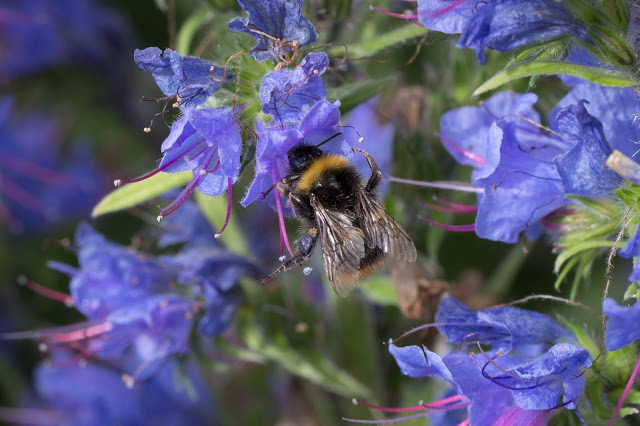
The Garden Bumblebee (Bombus hortorum) has a very long tongue. This is a worker.
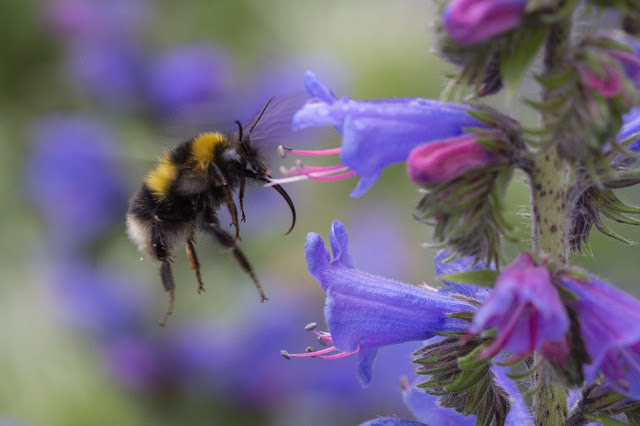
This is a queen Buff-tailed Bumblebee (Bombus terrestris). Note her short tongue which is less than half the length of the tongue in a Garden Bumblebee.
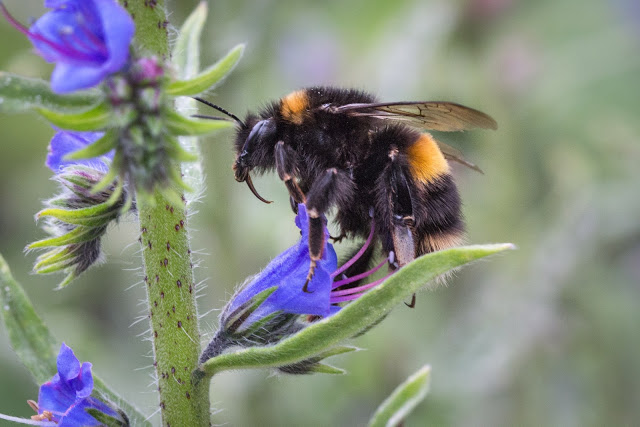
This is a White-tailed Bumblebee queen (Bombus lucorum), another short-tongued species.
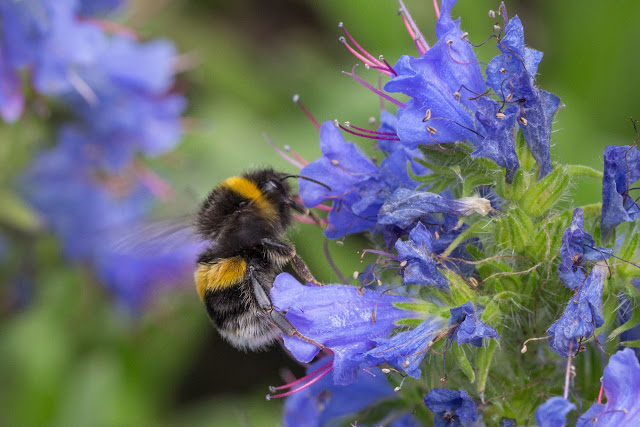
The male White-tailed Bumblebee has a broad yellow collar and a yellow moustache.
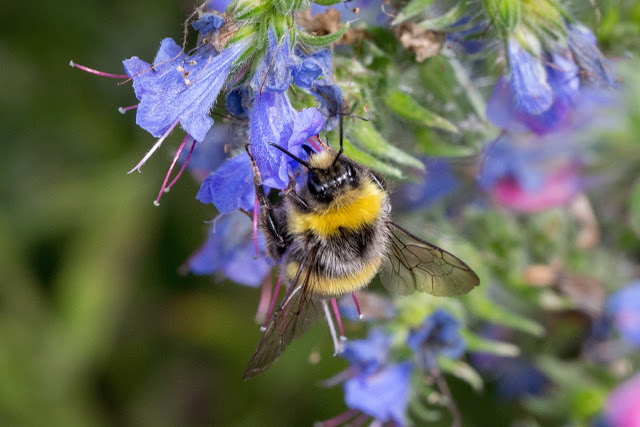
Buff-tailed and White-tailed workers are difficult to distinguish in the field. This one (whichever it is) has been collecting pollen from a different flower but has stopped by for some nectar.
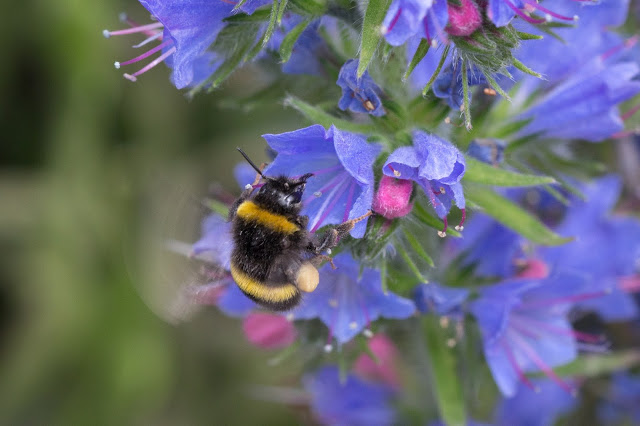
Bumblebees are often difficult to photograph but some are easily recognised even with their heads deep in the flowers. This is a Tree Bumblebee (Bombus hypnorum).
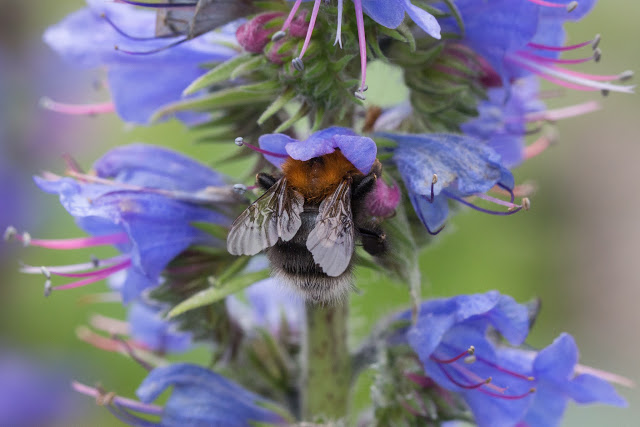
Tree Bumblebees usually have an orange/brown thorax, black middle and white tail, as above, but in some the thorax is very dark.
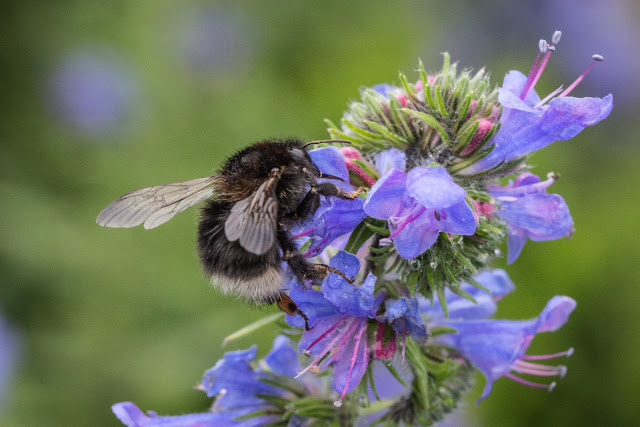
And a bumblebee with a difference. This is a Gypsy Cuckoo Bumblebee (Bombus bohemicus). Note the dark wings and absence of a pollen basket on the hind leg. This bee moves more slowly around the flowers and drinks for longer at each one. It has a short tongue and is more often seen on flat open flowers.
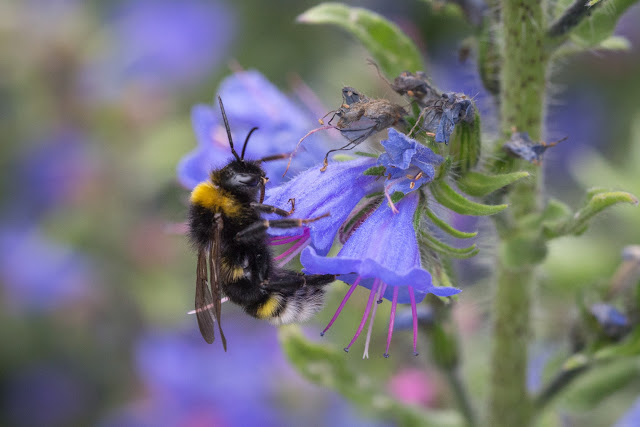
Solitary bees like Viper’s Bugloss as well. Here is a rather faded female Red Mason Bee (Osmia bicornis).
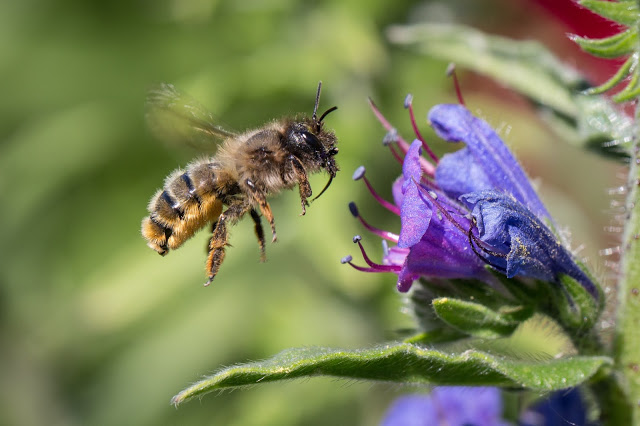
And a very old male Red Mason Bee. He has lost most of his fur and all of his red colour.
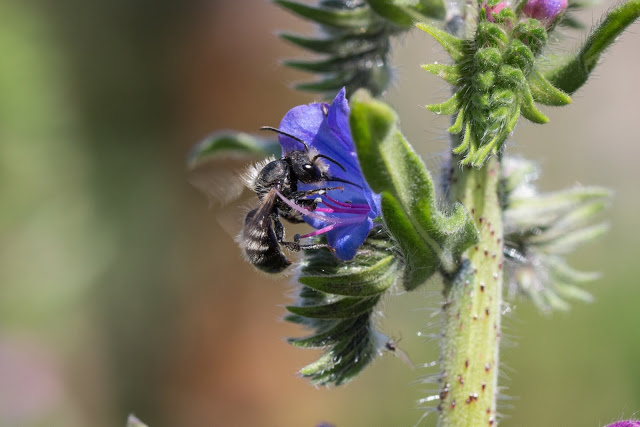
A female Patchwork Leafcutter Bee (Megachile centuncularis) visited the flowers as well.
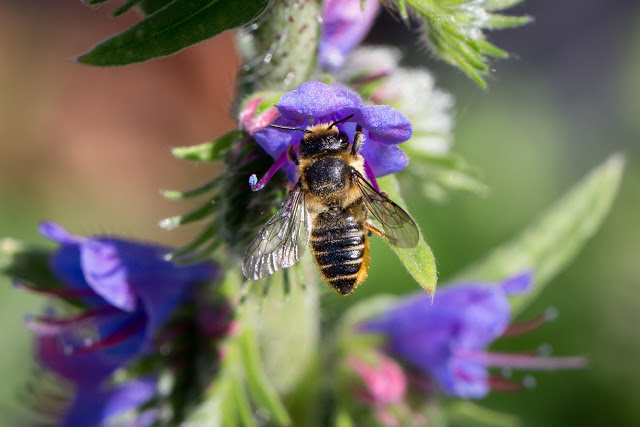
A real treat was a visit from a male Fork-tailed Flower Bee (Anthophora furcata).
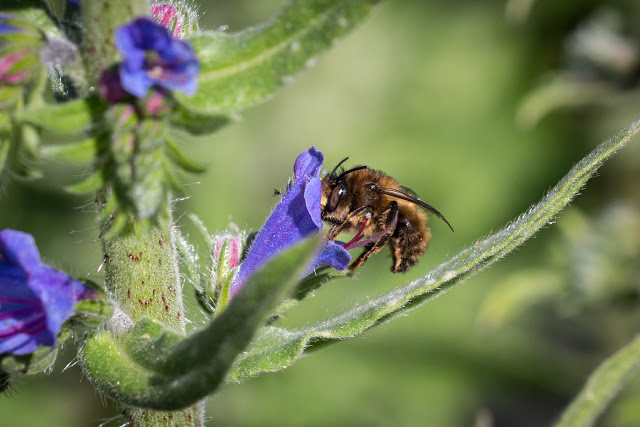
And last but not least, a Honey Bee (Apis mellifera). It is interesting that Honey Bees are more interested in collecting pollen than nectar and spend their time on the anthers and not in the flowers.
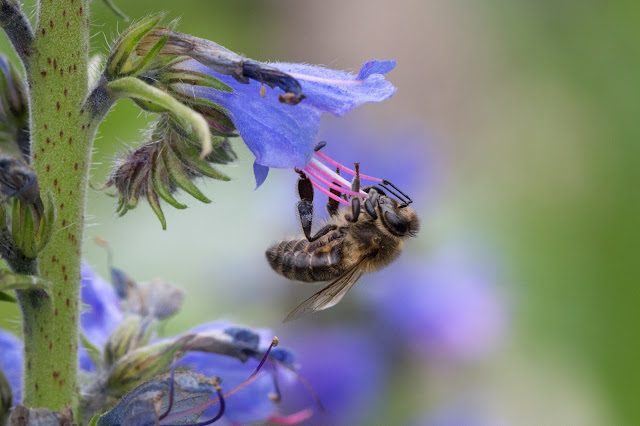
I have also noticed a lot of blue pollen in the hives. The bees tend to store pollen from different flowers separately in different cells, although it doesn’t always work out that way.
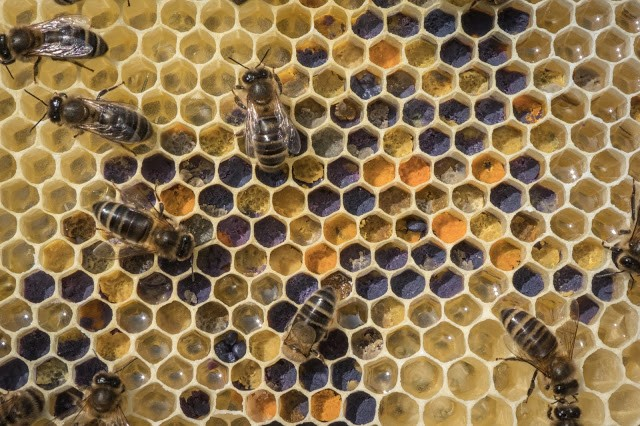
Viper’s Bugloss is attractive to other insects such as butterflies, which drink the nectar.
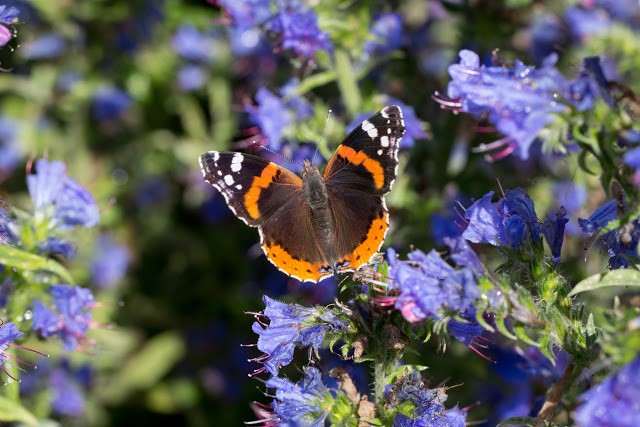
And hoverflies which eat the pollen.
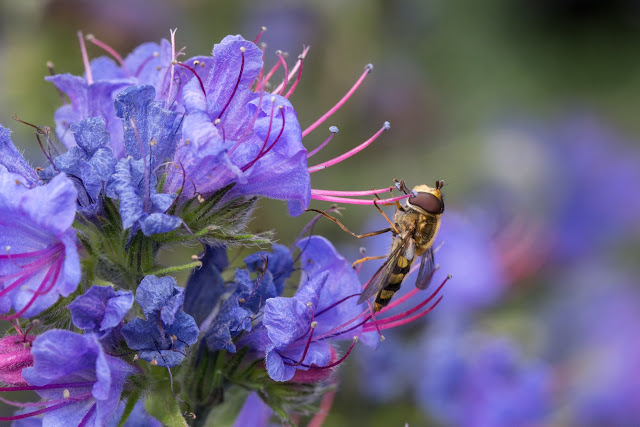
Viper’s Bugloss gets its strange name from the 16th century Doctrine of Signatures which held that herbs resembling human body parts, animals or other objects could be used to guide treatment of various ailments. Viper’s Bugloss was thought to look like a snake (although I can’t see the resemblance) and was recommended for treatment of adder bites. The bugloss part of its name means ox tongue and refers to the appearance of the leaves. Echium comes from the Greek word for viper and vulgare means common.
By Christopher Wren, local naturalist
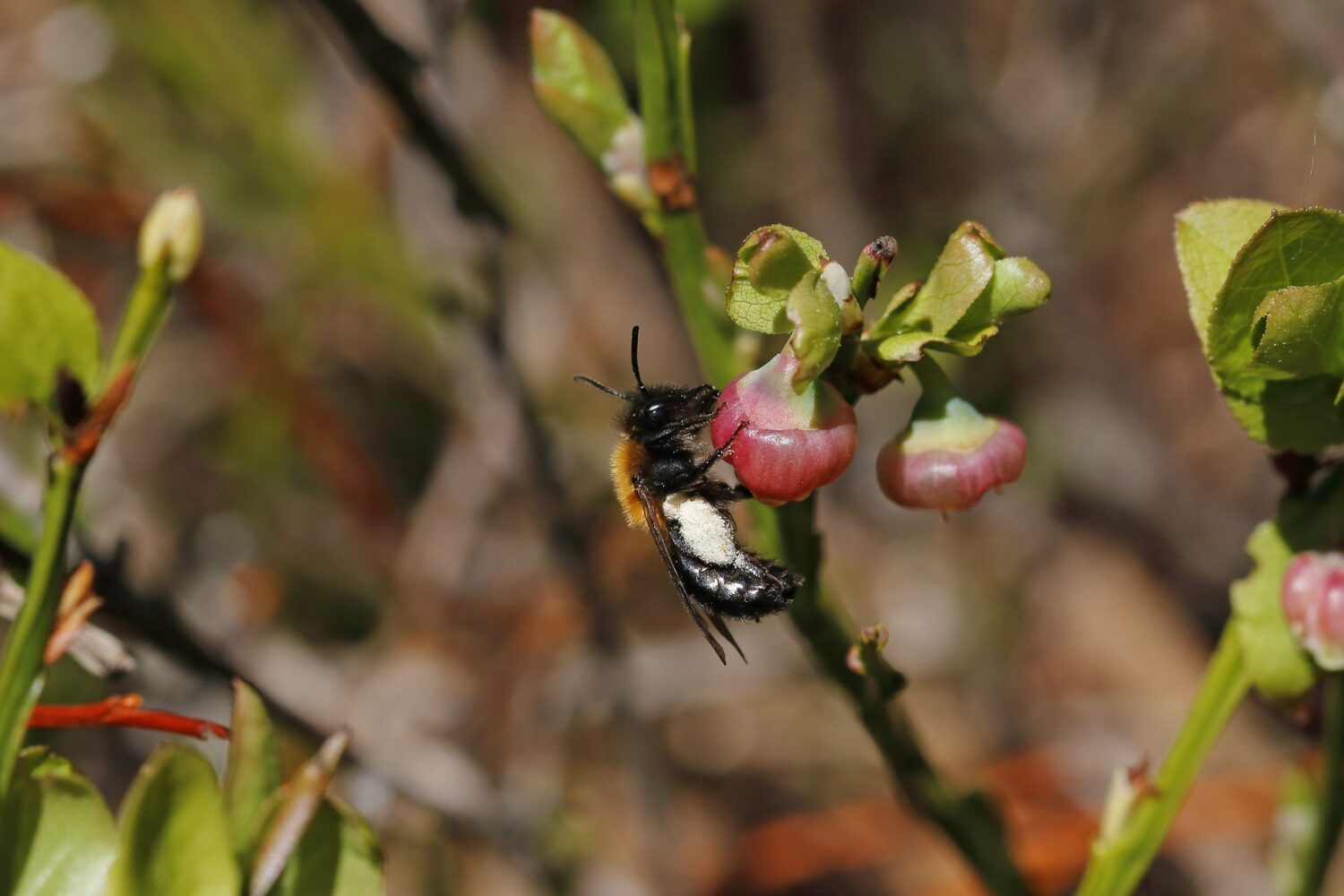
Join the North East Bee Hunt
Urban or rural, beginner or expert, we need your help to record eight distinctive bees across the North East this spring and summer.
Your records can add to our understanding of bees in the region and inform conservation and monitoring efforts.
Taking part is easy and every record counts, wherever you live in the region. Records of all bee species are encouraged.